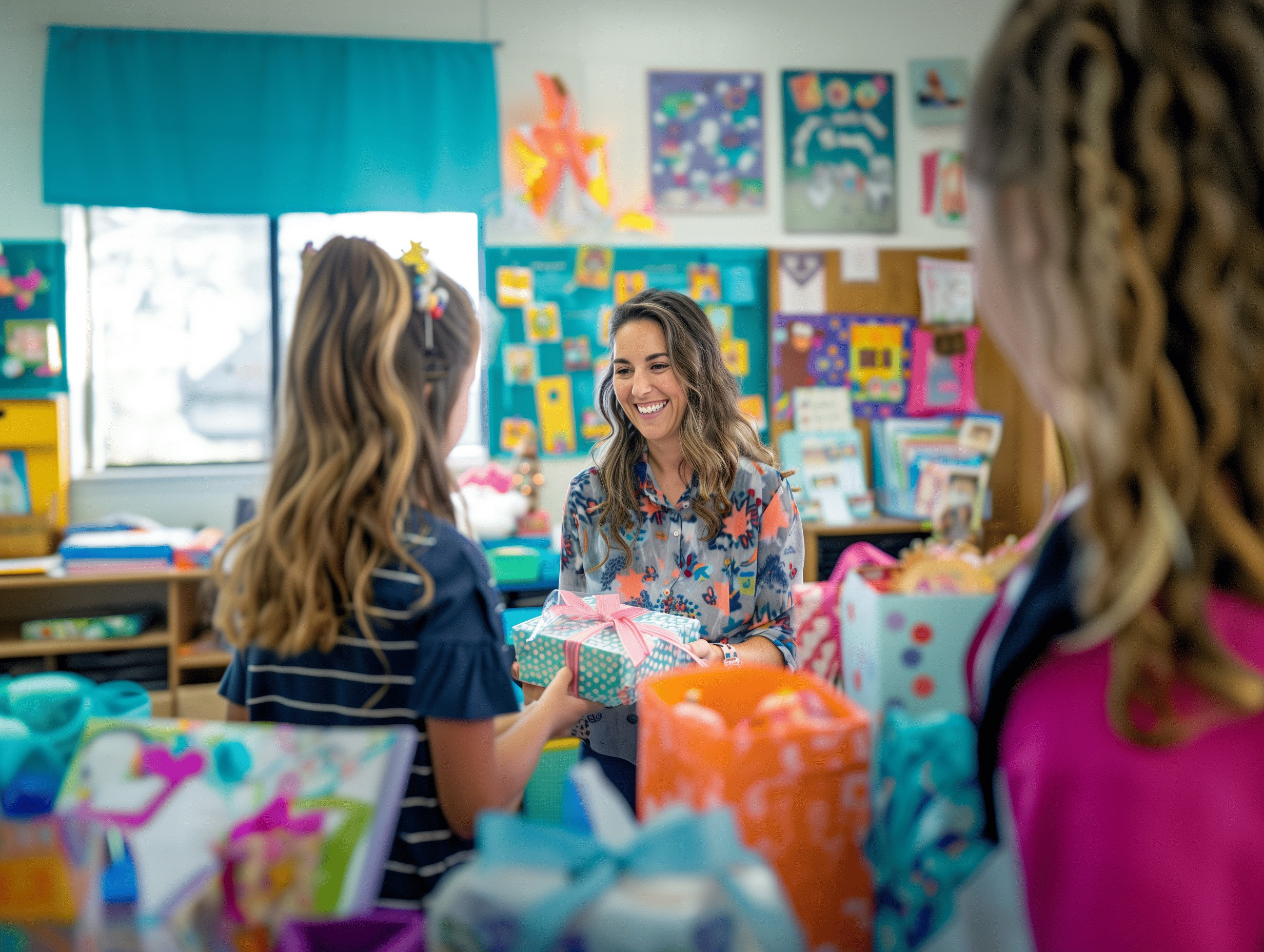Teacher's Workshop |
Student Responsibility Centers
Contributed By Dennis Dunlap
(The pages below may be printed out for personal use.)
Dennis Dunlap is President of Student Responsibility Centers, a Michigan-based educational consulting firm whose mission is to assist districts in making schools Where......
"teachers can teach and students can learn in a safe environment."
One of Dunlap's key initiatives is "sharing the magic" about this discipline process. He uses his own personal experiences to highlight the power of the process. In May 1999, by invitation, he appeared before the senate task force on school violence. This discipline process was considered as one of the solutions to assisting with violence in schools. His work has been featured at the 1998 Natl. At Risk conference, the MACAE Fall conference, the MATEDC spring conference and MAEO spring conference.
Introduction
Discipline has surfaced as a very important issue in the United States. It is an issue that has captured the attention of the President, and has been debated both in the highest court of the United States and in Congress. It is a subject of spirited debates in PTA chapters, at school faculty meetings, and within boards of education. "Clearly, discipline has become a political, legal, educational, religious, and family issue. It sharply divides parents, teachers, coaches, school administrators, and other caretakers of our children," (Gordon, 1989, p15). The issue of discipline in the classroom is an ongoing concern. School systems have initiated programs and processes within classrooms to assist schools and teachers in dealing with the problem of acting out behavior. Some of the more familiar programs are Love and Logic, Assertive Discipline, Control Theory/Reality Therapy, Positive Discipline, Discipline With Dignity, Choice Theory, and Responsible Thinking Process.
Over the past nine (9) years Odyssey has implemented the district wide discipline process, combined with several other discipline strategies, such as Control Theory/Reality Therapy (CT/RT), Discipline with Dignity, and Love and Logic. However, the general consensus was that these strategies and the districts discipline process was not achieving our program goals of increasing instructional time, changing the teacher's response to disruptions, and reducing discipline referrals to the building administrator.
During the 1992-93 school year, it was intent of the staff and administration at Odyssey to identify a program that addressed the issue of discipline in a positive manner and also promoted the ability of the individual student to analyze their own behavior and make conscious decisions regarding the changing of their behavior. So, the staff of Odyssey developed student success contracts as an entrance requirement for students enrolling at Odyssey. These student-generated contracts were a road map to the students' graduation and their future education and employment needs after graduation. The contract was evaluated by the student and staff every three (3) weeks. Those students at-risk were counseled and refocused on their success contract.
In January of 1995, the staff at Odyssey Middle/High School adopted the Student Responsibility Center (SRC) as the discipline program. Student Responsibility Centers is a discipline program designed to assist the staff at Odyssey in dealing with students who interrupt the teaching and learning of others in the classroom. It is based on the premise that teachers have to teach and students have the right to learn in a safe environment. The discipline program is designed to include how to respect the rights of others, how to get along with their peers, how to make effective plans for studying and self-discipline, how to understand the purpose of rules, and how to work with adults in a cooperative atmosphere.
The Student Responsibility Center is based on the Perceptual Control Theory (PCT) articulated by Powers, (1971). PCT is based on the premise that - "What drives us to do what we do is our comparing what we want to how we see things, and if there is a difference between them, we act to correct that difference, either by changing what we want or by acting to change what doesn't conform to what we want. The details of how we perform the actions are of little importance to us. Getting the environment to conform to what we want is our major concern. We act in whatever ways are necessary to perceive what we want to perceive, and we attempt to get around any disturbances we encounter," (Marken, 1989).
The school adopted this discipline program based on the perception that what we were currently doing with our discipline was punitive to the students, wasn't working on undesirable behavior, didn't get a commitment from the student to resolve the problem, and developed in them a sense of failure. We were doing to them and not for them. Young adults must learn how to deal with others in their environment and we must provide them with the maximum opportunity to learn to control their own world.
The school's intent is to always have a positive impact on students who demonstrate severe or chronic behavior problems. Students who make the decision to not follow classroom and/or school rules are choosing to go to the Student Responsibility Center (SRC). SRC is a room which is supervised by an adult trained in perceptual control theory. The atmosphere and rules of the Student Responsibility Center are critical. It should not be a place where students are amused or pampered. Nor should it not be a place where students are abused. Actually, it should be the tightest room in the school, very dull and boring.
Since this time Odyssey MS/HS has developed the Student Responsibility Centers to encompass not only discipline, but also the use of time outs, academic planning, and development of social skills. In February of 1997 the discipline process was instituted in the main elementary at Shepherd Public Schools. This was a real challenge because there are over six hundred (600) student in this K-5 building. In August of 1997 this discipline process was instituted in the middle/high schools at Shepherd Public Schools. In May of 1999, by invitation, Dennis Dunlap presented this model to the senate task force on school violence as a solution to assisting with violence in schools.
Student Responsibility Centers
This discipline process using Student Responsibility Centers (SRC) has been developed for implementation at Odyssey MS/HS and is now being adapted for use in other Michigan schools. This discipline process has three (3) basic elements, underlying beliefs, and a process. I would like to briefly describe the characteristics of these three (3) basic elements, underlying beliefs, and how the process works in a school.
Elements of Student Responsibility Centers
A set of underlying beliefs about discipline, academics, responsibility, and behavior and the appropriate framework for responses.
A systemic reflective process to follow for both students and supervising adults.
A continuous system of data gathering, assessment, and improvement of the disciplinary process.
Underlying Beliefs
-
People always make the best possible choice based upon what they know and/or have experienced in their lifetime
-
All individuals in the learning commUNITY have the right to a safe environment where teaching and learning are ensured
-
There is little or no difference between rewarding or punishing
-
There is value in developing relationships with others
-
Responsible people are valued in our society
- Discipline is a time to teach and learn
-
Asking questions, and not telling others what to do, provide a time for thinking
-
Research and data provide for better decision making
-
A foundation and framework are required for building a program
-
Establishing expectations on how everyone is treated in our learning commUNITY is fundamental
-
Apply best knowledge and practice to form a psychological base
- You can't control another person's behavior
How The Process Works In A School
First, the expectations for behavior are clearly defined for everyone in the learning commUNITY. The teachers' behaviors center on creating active learning environments based on the Michigan Standards and Benchmarks and the learning needs and styles of the individual student. The students' behaviors center on participating as an equal with other learners in the instructional setting.
Second, when the student disrupts the teaching and learning of another learner, they are asked a series of questions and given the opportunity to stop disrupting. If the student disrupts again they have chosen to use the Student Responsibility Center (SRC).
Third, while in the student responsibility center the student must complete a plan. Once the plan is completed and negotiated with the person they had the problem with, the student is allowed back into the environment they had disrupted.
If the student disrupts in SRC, they are again asked a series of questions and given the opportunity to stop disrupting. If the student disrupts again they have chosen to go home. In order to get back into SRC, the student, their parent/guardian, and the school administration must have a meeting to build a plan to get back into SRC. All students exit and enter the school through SRC.
For more information about Student Responsibility Centers (SRCs), contact Dennis Dunlap at < [email protected] >.



